My journey through the web of life as a biologist has always been one of awe and surprise. The universe in which we live is teeming with various life forms, each of which has its own pace and rhythm.
Among them, a certain species appears to take life more slowly. Their thoughtful movements, which are guided by a combination of ecological necessity and evolutionary choice, provide an engrossing window into the various strategies used by nature to survive and succeed.
This story takes place in a variety of settings, from the deep, undulating depths of our oceans to the lush, verdant canopies of the Amazon. Let’s investigate the existence of some of the slowest animals on the planet, whose tales of survival are as varied as they are fascinating.
21. Solenodon
The elusive solenodon, a nocturnal insectivore, ambles slowly and deliberately through its Caribbean habitat, adapting to a lifestyle divergent from the swift pace seen in many of its mammalian counterparts. As one of the scant venomous mammals, it relies on its toxic bite over speed for defense, offering a window into the diverse defensive tactics within the mammalian realm.
The solenodon’s slow pace, far from a liability, becomes a distinctive feature of its survival narrative, as it navigates the nocturnal world with cautious deliberation, capitalizing on its venomous bite to deter predators and subdue prey. This slow-paced, nocturnal lifestyle in tandem with a potent defense mechanism, paints a compelling picture of adaptation and survival in the face of evolutionary challenges.
20. Tortoise Beetle
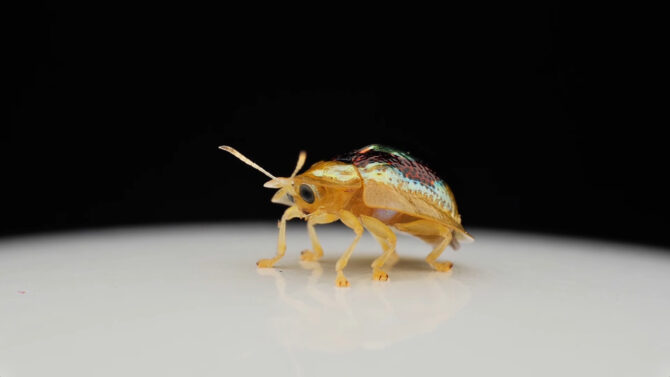
The tortoise beetle, adorned with a turtle-like shell and a slow, deliberate pace, is a small yet enthralling exemplar of nature’s armor. Its slow movement is balanced by effective camouflage and a tough exterior, illustrating how physical defenses can compensate for a lack of speed.
This tiny creature, though slow in pace, is a remarkable illustration of nature’s propensity for designing effective survival strategies. The tortoise beetle’s hardy exterior provides a robust shield against predators, allowing it to traverse its habitat at a leisurely pace.
This balance of slow movement and stout defense showcases a fascinating narrative of survival, underscoring the myriad ways nature equips its creatures for the trials of existence.
19. Stick Insect
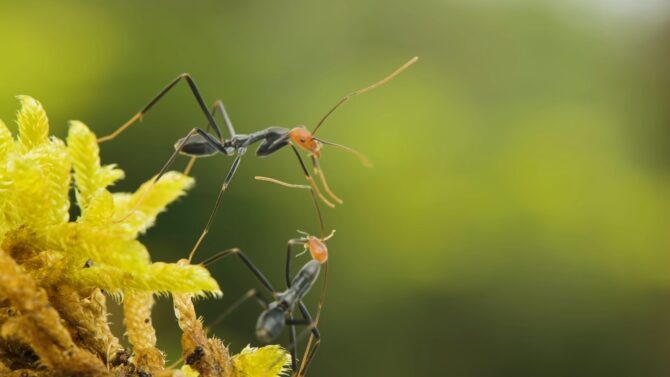
Camouflaged as twigs, stick insects epitomize stillness and slow movement as a tactical blueprint for survival. Their glacial pace, or often complete stillness, devised to avoid detection, showcases a unique form of survival acumen – one rooted in mimicry and patience.
Because of their slow movement and good camouflage, stick insects blend in with their surroundings and are almost undetectable to predators. This fusion of slow motion and visual trickery reveals a compelling story of survival that depends on the skill of disguising oneself and the persistence to go unnoticed.
The stick insect’s life, a patient and slow-moving ballet of mimicry provides an enthralling window into the seemingly limitless adaptability of stationary animals.
18. Greenland Shark
The Greenland Shark is one of the slowest swimmers in the aquatic world, moving at a pace of only 0.76 miles per hour. Unlike many of its shark relatives known for their speed and agility, the Greenland Shark has adopted a slow-moving lifestyle.
These giant creatures, which can grow up to 24 feet in length, have a unique strategy to catch their prey; they sneak up on them while they sleep, making the need for speed redundant. This lethargic pace is in harmony with the cold, deep waters of the Arctic and North Atlantic oceans they inhabit, where the metabolic rate is generally lower due to the cold temperatures.
Moreover, the slow movement helps in conserving energy in an environment where food can be scarce. Their sluggish speed doesn’t hinder them; instead, it’s a crucial part of their survival strategy in the frigid waters, showcasing yet another fascinating adaptation in the realm of slow-moving animals.
17. Leafcutter Ant
Despite their diminutive stature and languid pace, leafcutter ants are exemplars of collective effort as they meticulously forage for leaves to nurture their fungal gardens. Their industrious nature, a stark contrast to their slow movement, showcases that triumph in nature often hinges on collaboration rather than speed.
The leafcutter ants’ communal living and organized labor highlight a remarkable blueprint of collective survival, where each ant, regardless of its pace, plays a crucial role in the sustenance and thriving of their colony. Their slow yet deliberate movements in leaf harvesting and fungal cultivation unfold a narrative of nature’s ingenious ways of ensuring survival through cooperation and division of labor.
16. Chameleon
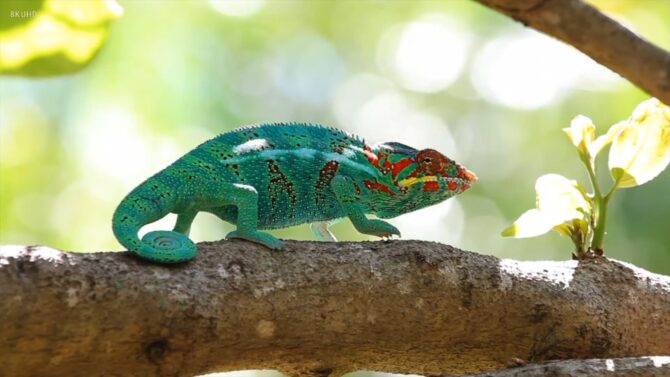
Chameleons navigate through their domain with a slow, calculated grace, blending seamlessly into their surroundings with a color-changing spectacle. Their deliberate movements, a mesmerizing dance of survival, crown them as the masters of disguise in the vibrant tableau of the animal kingdom.
The chameleon’s unhurried pace is balanced by its remarkable ability to morph its hue, demonstrating how physical adaptations can compensate for a lack of speed. Their slow yet vigilant traversal through their habitat, coupled with their unique color-changing ability, unveils a captivating narrative of survival that relies on stealth and disguise rather than haste.
15. Pangolin
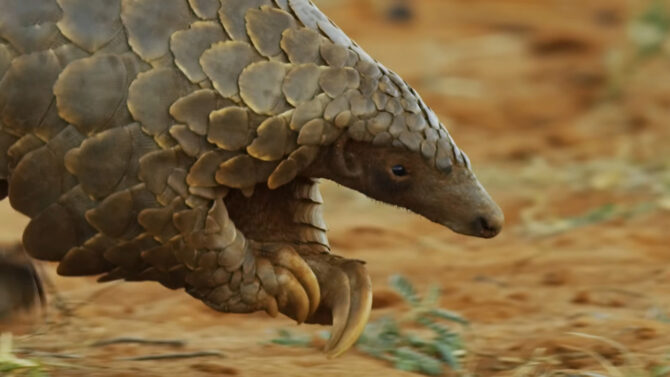
The elusive pangolin ambles through its habitat at a leisurely pace, shielded by a formidable armor of scales. Their slow stroll harmonizes with their solitary nocturnal habits, underscoring the diverse survival strategies employed across different species.
Far from being a burden, the pangolin’s leisurely movements are an important part of their survival strategy since they allow them to hunt for insects while their scaly armor offers a strong barrier against predators. Their nocturnal lifestyle and slow-paced existence reveal a distinct narrative of survival that depends more on physical protection and thoughtful moves than on speed.
14. Banana Slug
Banana slugs, with their top speed of 0.03 miles per hour, offer a window into a life led at a deliberate pace. Their leisurely crawl serves well in their role as decomposers in forest ecosystems, demonstrating the significance of each pace in nature’s cycle.
The slow, steady movement of banana slugs is in harmony with their crucial role in breaking down organic matter, contributing to the nutrient cycling in the ecosystems they inhabit. This seemingly sluggish existence, far from unproductive, is a vital cog in the forest’s ecological machinery, showcasing yet another fascinating adaptation in the realm of slow-moving creatures.
13. Jellyfish
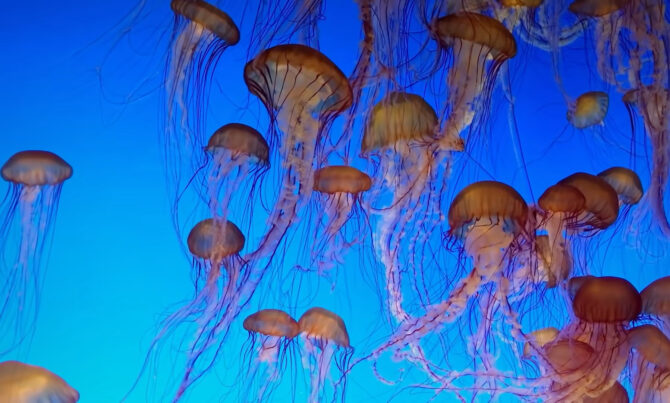
Jellyfish, the ethereal drifters of the ocean, ride the currents rather than expending energy in pursuit of prey. The predatory success of these swarms or blooms hinges more on their stinging cells than their speed, presenting a fascinating adaptation to oceanic life.
The passive drifting coupled with their ability to stun and capture prey with their tentacles unfolds a narrative of survival that relies on the whims of the ocean currents and the potency of their sting. The jellyfish’s lifestyle, a blend of passive drifting and potent defense, exemplifies how life in the vast oceans has evolved unique strategies to thrive amidst the endless blue expanses.
12. Worm
Worms, through their gentle wriggles, aerate the soil, playing a silent yet significant role in Earth’s ecology right under our feet. Their unhurried movements might seem trivial, yet they hold an indispensable role in maintaining soil fertility, thereby aiding in the growth of plants that form the base of food chains.
This slow dance with the soil reveals the profound impact even the slowest beings have on our ecosystems, reminding us of the interconnectedness in nature’s grand scheme.
11. Coral

Upon a fleeting glance, corals might masquerade as mere underwater foliage, yet they are slow-growing animals with some species inching along at just 1 to 3 centimeters per year. This slow pace of existence mirrors a delicate equilibrium with their marine environment, reflecting resilience amidst the ever-changing tides of our oceans.
Their sluggish growth rate is in harmony with the nutrient availability in the marine ecosystem, making them a living testament to the intricate balance of life underwater.
10. Slug
The humble slug, with its slow, steadfast crawl, embodies the virtues of patience and persistence. Their mucus trail, while aiding in movement, also acts as a deterrent to predators, showcasing a well-coordinated mechanism for survival even amidst sluggishness.
This seemingly mundane creature illustrates how even in a state of languid movement, there lies a meticulously coordinated mechanism for survival, making the slug a symbol of endurance in spite of its slow pace.
9. Loris
Amidst the stillness of night, lorises traverse through the trees with a deliberate slowness, a tactful maneuver to escape the attention of predators. This cautious arboreal ballet portrays an alternative narrative to the often frantic pace of the primate world, sketching a tableau of careful navigation amidst the forest canopy.
They provide a window into the various rhythms of life that pulse through the animal kingdom with their slow motions, which tell a story of survival that depends more on stealth than on speed.
8. Manatee
The gentle manatee, often dubbed a “sea cow,” elegantly glides through warm coastal waters, embodying a state of tranquility. Their slow, deliberate movements echo a harmonious adaptation to their serene herbivorous lifestyle, casting a peaceful narrative of coexistence within nature’s diverse realms.
This aquatic herbivore, with its slow pace, reminds us of the tranquil existence possible amidst the gentle ebb and flow of nature’s currents.
7. Gila Monster
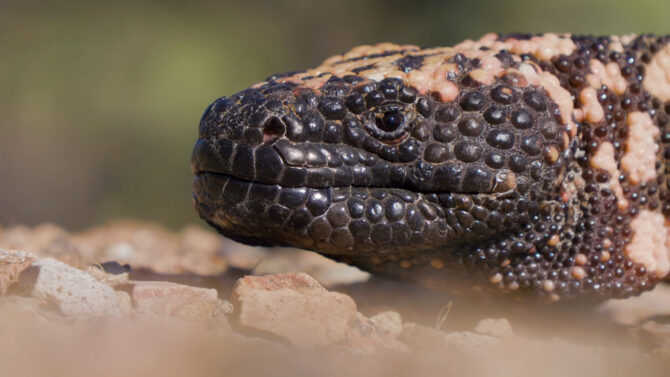
Amidst the harsh desert expanse, the Gila Monster maneuvers with slow deliberation, a living testament to endurance. While their poisonous bite assures a deadly defense against threats, their leisurely movement conserves energy under the scorching sun, emulating the tough fortitude needed to flourish in such a difficult environment.
In tune with the beat of the desert, the Gila Monster’s cautious and slow motions paint a picture of survival that shows how life can flourish in even the most harsh environments.
6. Seahorse

The seahorse, with its graceful glides, unveils a different rhythm of life beneath the waves. Rather than vying against currents, they harness excellent camouflaging ability to remain inconspicuous, evading predators and awaiting prey with a patience emblematic of a different kind of undersea agility.
Their unhurried pace, coupled with their ability to blend with their surroundings, unfolds a narrative of patient waiting and quiet resilience underwater, an ethos that diverges from the usual frantic pace of marine life.
5. Koala
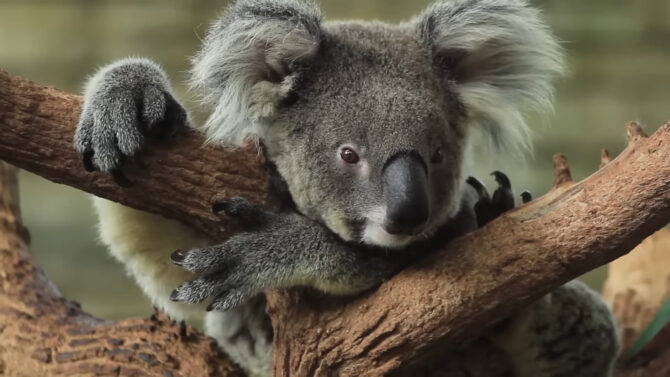
Koalas, with their sleepy countenance and languid movements, encapsulate the essence of a life led to conserve every ounce of energy. Their days are a rhythmic blend of sleep and slow movement, a necessary adaptation to a diet primarily consisting of eucalyptus leaves, a nutrient-poor yet abundant source of sustenance.
This laid-back lifestyle, dictated by their low-calorie diet, showcases a unique adaptation to the ecological niche they inhabit and reminds us of the varied pace at which life thrives amidst nature’s bounty.
4. Starfish

Gliding along the ocean floor at a mere top speed of 0.02 miles per hour, starfish display a slow grace beneath the waves. It provides a glimpse into the less rushed but no less ruthless predatory pursuits in the aquatic world.
Their slow stride is only a masquerade, disguising their predatory instincts as they cautiously approach their prey. A story of patience and perseverance in the face of survival is revealed by their leisurely glide on the ocean floor and their predatory instincts.
3. Garden Snail

The humble garden snail, with a maximum speed of a mere 0.03 miles per hour, epitomizes a life led at a leisurely pace. Yet, within this slow crawl lies a tale of resilience.
Nature demonstrates its amazing talent for effective design in the snail’s protective shell, which functions as both a home and a barrier against predators. They demonstrate how life, regardless of speed, harbors a robust spirit capable of navigating the ups and downs of existence by using their sluggish pace, which is far from a hindrance, as an essential component of their survival arsenal.
2. Giant Tortoise

The venerable giant tortoise, a symbol of longevity, ambles through life at a pace reflective of their extensive lifespan. Their unhurried gait, coupled with formidable shells, form a robust defense against potential threats, narrating a tale of survival that spans centuries.
This slow pace, reflective of a life led with caution and patience, underscores a narrative of endurance and adaptation, as the giant tortoise navigates through the challenges of life at a pace that ensures survival amidst the vicissitudes of time.
1. Three-toed Sloth
The iconic three-toed sloth, a native of the Americas, is often hailed as the torchbearer of slow motion in the animal kingdom. Their unhurried movements, a manifestation of an extremely low metabolic rate, are a masterclass in energy conservation.
They can survive on a diet with less calories than other herbivores thanks to their metabolic economy. The three-toed sloth’s slow, deliberate motions are an example of how nature can adapt to and survive in different ecological niches.
They also show off a special way of living that contradicts the frenzied rhythms of other animals.
FAQ
What is the significance of a slow metabolic rate in three-toed sloths?
The slow metabolic rate in three-toed sloths is crucial for energy conservation, which allows them to thrive on a less calorie-dense diet compared to other herbivores. This adaptation is particularly advantageous in their native habitats where their specific food sources might be scarce.
How does the giant tortoise’s shell contribute to its survival?
The shell of a giant tortoise serves as a formidable defense against potential threats. This robust physical barrier, coupled with their slow movements, helps deter predators and contributes to the tortoise’s longevity and survival over centuries.
Why do snails move at a leisurely pace?
Snails move at a leisurely pace due to their physiological design and the protective shell they carry around. This slow movement is an adaptation that, while conserving energy, also makes the best use of its protective shell against predators.
In what way does the slow pace of starfish help in their predatory behavior?
Starfish’s slow pace allows them to approach their prey stealthily. Their slow movement might disguise their predatory nature, reducing the chances of prey fleeing before they get close enough to catch them.
How does the koala’s diet relate to its slow movement?
Koalas have a diet primarily consisting of eucalyptus leaves, which are nutrient-poor. Their slow movement and sleepy demeanor are adaptations to conserve energy, making the most of the limited nutrition they receive from their diet.
What makes the seahorse’s camouflaging ability significant in its survival?
The seahorse’s excellent camouflaging ability allows them to remain inconspicuous in the water, evading predators and awaiting prey. This ability, coupled with their slow, graceful glides, exemplifies a different rhythm of life underwater that enhances their survival chances.
Final Words
It has been a poetic voyage through the various rhythms of existence as well as a scientific expedition through the leisurely chapters of the natural world. The thoughtful pace of these 21 species reveals nature’s great wisdom in devising survival techniques that go beyond the dogmatic idea that success is equated with speed.
Each tale has revealed a calm yet potent aspect of survival, from the manatee’s graceful glide to the garden snail’s quiet perseverance. In the big play of life, every actor, regardless of their speed, bears an important role in maintaining the ecological balance, and this investigation has enhanced my understanding of biology in that way.
Through understanding and appreciating the slower tempos of these creatures, we are reminded of the intricate and delicate balance that underpins our vibrant biosphere. The slow-moving animals beckon us to pause, reflect, and marvel at the diverse manifestations of resilience and adaptation that flourish across the tapestry of existence.






